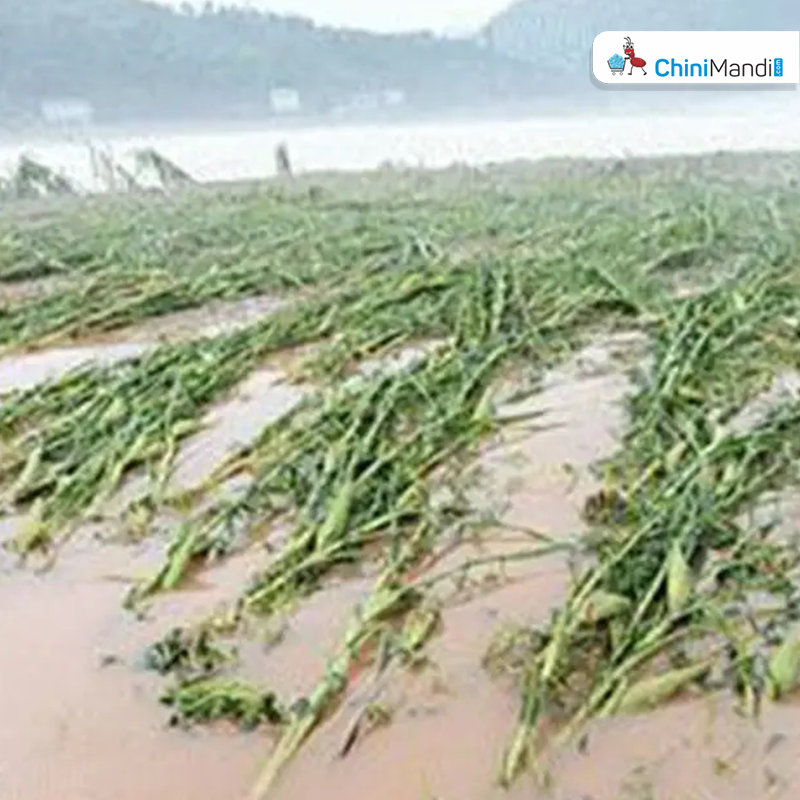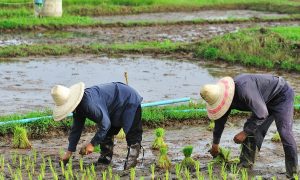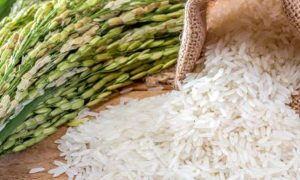Floods threaten rice production

The USDA forecasts a 3% decline in Bangladesh’s rice production for 2024-25 due to severe flooding, lowering estimates to 11.5 million hectares and 36.8 million metric tons. Floods have significantly impacted Aus rice and are expected to reduce yields. However, a strong Boro harvest and government support for Aman seedlings aim to stabilize food security.
The US Department of Agriculture (USDA) has revised its forecast for the 2024-25 marketing year for Bangladesh, predicting a 3% fall in both rice harvested area and production due to the devastating floods that swept through different parts of the country.
“For marketing year 2024-25, Post forecasts rice harvested area and production at 11.5 million hectares and 36.8 million metric tons (MT), respectively. This forecast of the harvested area and production is 3.4% and 2.4% lower than Post’s previous forecast, on lower acreage of Aus and Aman season rice due to flooding,” according to the USDA report published recently.
Earlier in April, USDA Post forecasted the total rice harvested area at 11.9 million hectares and production at 37.7 million tonnes for the 2024-25 marketing year.
Considering the reduced production and challenges with rice imports, Post forecasts rice imports at 1 lakh tonnes and a rise in domestic price.
Dr Jahangir Alam Khan, an agro-economist and researcher, told the Daily Sun that the food security of the country will not be affected much by this.
“The country witnessed a good harvest in the last Boro season and the government has a good stock of rice currently. Though the Aus production will not return, the farmers can cultivate late Aman paddy on their fields and meet the target,” he said.
“The government and students started to produce Aman paddy seedlings for the flood-affected farmers. If the high-yielding late variety Aman seedlings are cultivated, the production target will be achieved and the country won’t need to import rice,” Jahangir Alam said.
For the current marketing year, Boro rice was the first crop, which was transplanted in December 2023-January 2024 and harvested in April-May 2024. The Boro yield was very good with no natural disasters such as drought, heatwaves, cyclone or pest outbreak.
The total Boro rice cultivated area was 4.9 million hectares with a total production of 20.5 million tonnes during the marketing year.
Post has reduced the forecast for the harvested area and production of Aus rice to 900,000 hectares and 2.1 million tonnes, respectively, which is 18.2% and 16% lower than its previous estimate. This reduction is due to flash floods that occurred during June and early July.
Heavy rains and water flowing from upstream regions in the northern part of Bangladesh caused flooding that damaged Aus rice fields in many areas of Sylhet and Mymensingh divisions.
Farmers are also showing a lack of interest in Aus rice cultivation as many reported planting mustard followed by Boro rice. Post contacts note that the lack of good varieties of Aus season rice is another reason for the decline in cultivation.
Post also observed that with fewer farmers growing Aus rice, pest and insect infestations are higher. While the Department of Agricultural Extension (DAE) provides various incentives to farmers, including seeds and fertilisers, to encourage Aus rice cultivation, adoption remains very low, according to the report.
DAE Director General Tajul Islam Patwary told the Daily Sun that Aus and Aman paddy and vegetables were mostly affected by the flood.
“We’re progressing to recover the Aman production by creating new seedlings and hope that the Aman production will not be hampered. We’re producing paddy seedlings and students from different agricultural universities are also coming forward to produce paddy seedlings to recover the production loss,” he said.
“The DAE is providing all kinds of technical, input, advice and other support for farmers so that they can cultivate alternative crops now on their croplands,” he added.
Post also reduced the forecast for Aman season rice harvested area and production to 5.7 million hectares and 14.2 million tonnes, 3.4% lower than the previous projection, due to severe flooding in several districts of Chattogram, Sylhet and Barishal during the third week of August 2024.
On 18-21 August, several districts in Chattogram, Barishal and Sylhet divisions received heavy rains, leading to flooding in Feni, Noakhali, Cumilla, Lakshmipur, Moulvibazar, Habiganj and Brahmanbaria districts, as well as landslides in Cox’s Bazar district.
Since 20 August, heavy flows of water from the Indian highlands through the Muhuri, Kahua, Silonia and Gumti rivers caused devastating floods in Feni, Cumilla and other adjacent eastern districts.
The floods have impacted 1,414,089 farmers, inundating over 372,733 hectares of land and damaging crops on more than 208,573 hectares between 16 August and 30 August, according to the DAE.
To read more about the news about the Rice News continue reading Agriinsite.com
Source Link : https://www.daily-sun.com/post/765565














